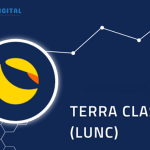Ripple’s Solution to Cross-Border Payment Challenges

Cross-border payments have long been plagued by a host of challenges, including high costs, slow settlement times, limited access, and complex compliance procedures. Ripple, a leading blockchain technology company, offers a solution to these challenges by providing a fast, efficient, and transparent payment network.
Read Also: Reviving LUNC: Removing Burn Tax Barriers and Building for the Future
Key Challenges in Cross-Border Payments
- High Costs: Traditional cross-border payments often involve multiple intermediaries, each charging fees, which can significantly increase the overall cost of the transaction.
- Slow Settlement Times: Cross-border payments can take several days or even weeks to settle, causing delays and inconvenience for businesses.
- Limited Access: Many financial institutions, especially smaller banks, may not have access to the global payment networks required for efficient cross-border transactions.
- Service Reliability Issues: Technical glitches, system failures, and human error can disrupt cross-border payments, leading to delays and financial losses.
- Complex Compliance Management: Adhering to various regulatory requirements across different jurisdictions can be a complex and time-consuming process.
- Liquidity Constraints: Ensuring sufficient liquidity in foreign currencies can be a challenge, particularly for smaller financial institutions.
How Ripple Addresses These Challenges
Ripple’s blockchain-based solution offers several advantages over traditional methods:
- Reduced Costs: By eliminating intermediaries and streamlining the payment process, Ripple can significantly reduce transaction costs.
- Faster Settlement Times: Ripple’s network allows for near-instantaneous settlement of cross-border payments.
- Increased Access: Ripple’s network provides access to a global network of financial institutions, enabling even smaller banks to participate in cross-border payments.
- Enhanced Reliability: The decentralized nature of blockchain technology makes Ripple’s network more resilient to failures and disruptions.
- Simplified Compliance: Ripple’s technology can help financial institutions comply with regulatory requirements by providing transparency and traceability.
- Improved Liquidity: By leveraging the power of blockchain, Ripple can facilitate the efficient movement of funds across borders, improving liquidity for financial institutions.
Read Also: Shiba Inu Burns Over 2 Billion Tokens: A Significant Step Towards Deflation
By addressing these key challenges, Ripple is transforming the way cross-border payments are conducted, making them faster, cheaper, and more secure. As the adoption of blockchain technology continues to grow, Ripple’s innovative solution is poised to revolutionize the global financial system.
Follow us on Facebook, Telegram, and Google News.

Cryptolifedigital is a cryptocurrency blogger and analyst known for providing insightful analysis and commentary on the ever-changing digital currency landscape. With a keen eye for market trends and a deep understanding of blockchain technology, Cryptolifedigital helps readers navigate the complexities of the crypto world, making informed investment decisions. Whether you’re a seasoned investor or just starting out, Cryptolifedigital’s analysis offers valuable insights into the world of cryptocurrency.










